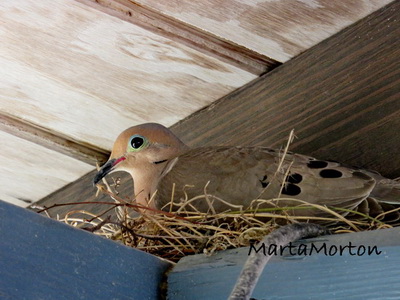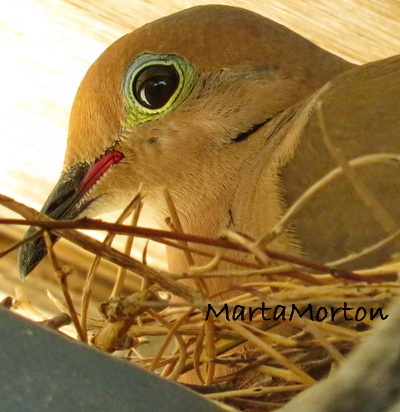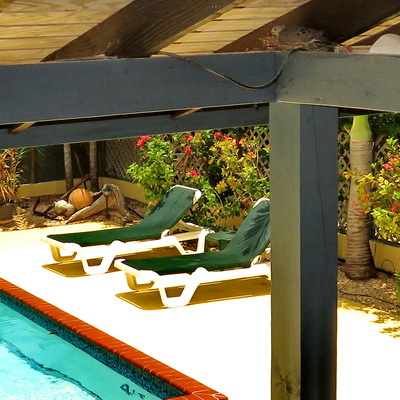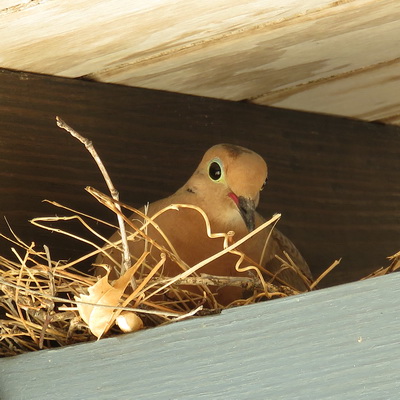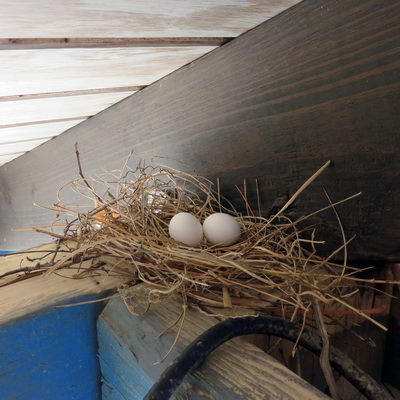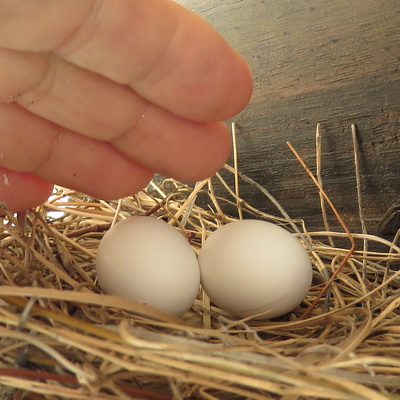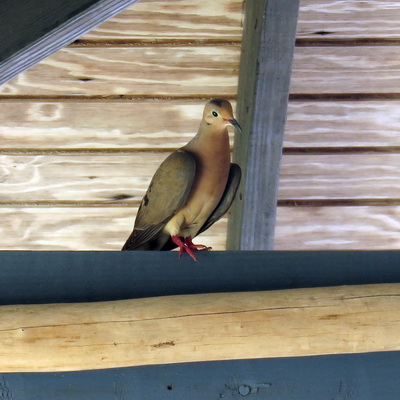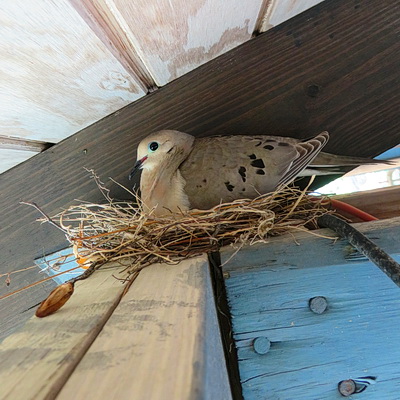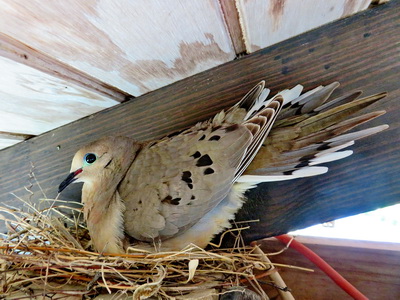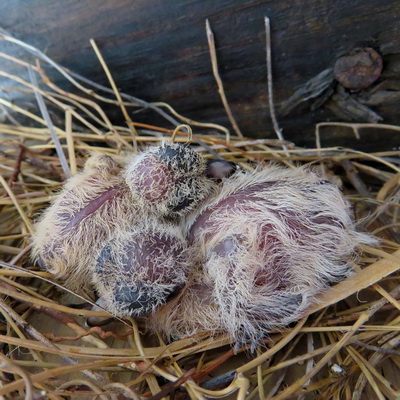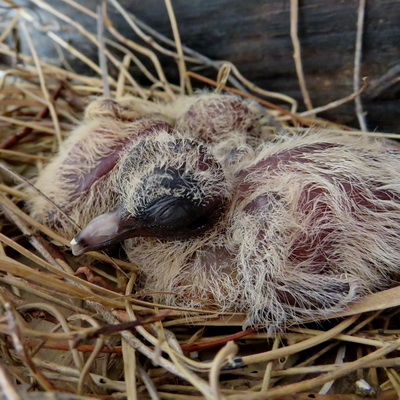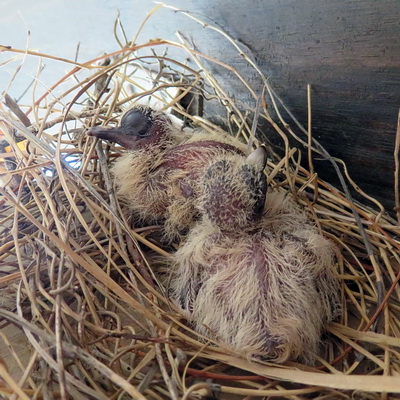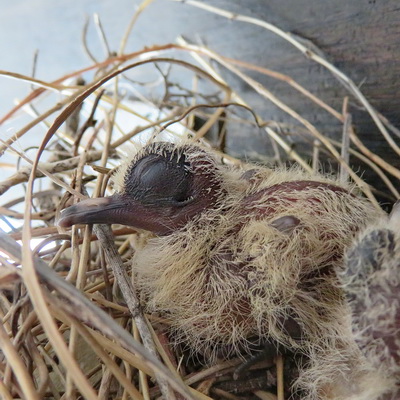We saw some twigs and straw sticking out of the rafters of the tikihut at Harbour Club Villas and Marina. As we went to clean it up, we discovered this pretty little Mourning Dove on its nest of twigs.
The mourning dove is named for the rather haunting and sad cooing sound it makes. When it flies, it’s wings make a whistling sound. They are mostly seed eaters that feed on the ground and here at Harbour Club Villas, we often see them pecking at the gravel under our neem trees.
I couldn’t resist shooing it off the nest so that I could photograph the two eggs. Both parents will build a rather flimsy platform nest usually up high in a tree or a bush. The eggs hatch after 14 days or so and one is laid in the evening and the second one in the morning. Now I didn’t know that both parents care for the little ones. I have noticed another dove hanging around that has been spotted on the roof of the tikihut. I also learned that it’s usually the male that incubates the eggs during the day and the female at night. I don’t know that I can tell the difference between the male and the female.
The mourning dove is 9-13 inches in length and has a wingspan of 15-18 inches. It has a grayish-brown body and quite a long, pointed tail that has a border of white. The dove’s head is small and rounded with a small, thin, black bill. Legs and feet are pink. The wing has black spots and there is a black spot under the eye. The eyes are brown and surrounded by a blue circle of skin. Males and females look alike, but the female is slightly smaller and duller in color.
Both parents will feed the chicks that are also called squabs. They are fed pigeon milk which is a mixture of water, fat, minerals, and protein that the male and female mourning doves produce in their crop. The crop is a sac that is found at the bottom of their esophagus.
In the days to come, I will add more photos as the chicks grow and leave the nest.
Marta
http://www.harbourclubvillas.com

